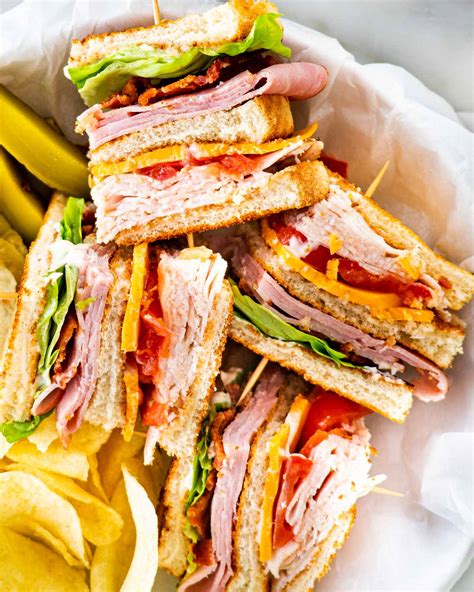Discover the flavors of traditional Turkmenistan dishes, key ingredients, and cooking methods. Explore the influence and fusion recipes in Turkmen cuisine.
Traditional Turkmenistan Dishes
Contents
Turkmenistan is known for its rich and diverse cuisine, with a wide variety of traditional dishes that have been passed down through generations. One of the most popular traditional dishes in Turkmenistan is the plov, a flavorful rice dish made with lamb, carrots, and a mix of aromatic spices. This dish is often enjoyed during family gatherings and special occasions, and is considered a staple in Turkmen cuisine.
Another beloved traditional Turkmen dish is shashlyk, which is a kebab made with marinated and grilled meat, often served with flatbread and pickled vegetables. The meat is typically seasoned with a blend of spices and is cooked over an open flame, giving it a delicious smoky flavor that is characteristic of Turkmen cuisine.
Manty is also a popular traditional dish in Turkmenistan, consisting of steamed dumplings filled with savory meat and onions. These dumplings are typically served with a side of yogurt or a spicy tomato sauce, and are a favorite comfort food of many Turkmen people.
In addition to these well-known dishes, Turkmenistan is also famous for its variety of soups, such as shurpa, a hearty meat and vegetable soup, and dograma, a thick soup made with meat and chickpeas. These soups are often enjoyed as a main course and are cherished for their rich and satisfying flavors.
Influence of Turkmen Cuisine
The Turkmen cuisine is influenced by various cultures and traditions, making it a unique and diverse culinary experience. Over the centuries, the food in Turkmenistan has been shaped by the Persian, Russian, and Central Asian influences, resulting in a rich and flavorful gastronomic heritage. The use of herbs and spices in Turkmen dishes reflects the Persian influence, while the Russian influence can be seen in the use of dairy products and hearty stews. Additionally, the Central Asian influence is evident in the emphasis on grains and bread in Turkmen cuisine.
One of the key aspects of Turkmen cuisine is its emphasis on hospitality, which is deeply ingrained in the culture. Meals are often a communal affair with large gatherings, and guests are treated with the utmost respect and generosity. This emphasis on hospitality has shaped the food culture in Turkmenistan, leading to an abundance of sharing dishes and an emphasis on generosity and abundance in meals.
The geographical location of Turkmenistan has also played a significant role in shaping its cuisine. The country’s proximity to the Caspian Sea has resulted in a strong emphasis on seafood in Turkmen dishes, with fish and other seafood being prominent in many traditional recipes. Additionally, the country’s diverse landscape, which includes deserts, mountains, and forests, has led to a wide variety of ingredients and culinary techniques being used in Turkmen cuisine.
Another important influence on Turkmen cuisine is the nomadic heritage of the Turkmen people. Nomadic traditions have had a significant impact on the food culture in Turkmenistan, leading to the development of portable and long-lasting food items such as flatbreads, dried fruits, and preserved meats. These traditional nomadic foods continue to be an integral part of Turkmen cuisine, reflecting the enduring influence of the country’s nomadic heritage.
Key Ingredients in Turkmen Recipes
Turkmen cuisine is known for its rich flavors and unique ingredients that are used in traditional recipes. The key ingredients in Turkmen recipes are often sourced from the local region and include a variety of meats, spices, and vegetables.
Meat: One of the staple ingredients in Turkmen recipes is meat, particularly lamb and beef. These meats are often used in dishes such as kebabs, stews, and pilaf. The use of meat in Turkmen cuisine reflects the country’s nomadic heritage and the importance of livestock in their culture.
Spices: Turkmen dishes are often flavored with a combination of spices such as cumin, coriander, and black pepper. These spices add depth and warmth to the dishes and are often used to marinate meats or flavor rice and vegetable dishes.
Vegetables: Fresh vegetables such as tomatoes, onions, and peppers are commonly used in Turkmen recipes. These vegetables are often used to create flavorful sauces, salads, and side dishes that complement the meat-based main courses.
Dairy: Dairy products such as yogurt and sour cream are also key ingredients in Turkmen recipes. These dairy products are often used to add richness and tanginess to dishes, especially in sauces and marinades.
Cooking Methods in Turkmenistan
When it comes to cooking methods in Turkmenistan, the food culture is greatly influenced by the nomadic lifestyle and agricultural traditions of the Turkmen people. One of the traditional cooking methods involves the use of an outdoor clay oven known as a tandoor. This cylindrical oven is typically used for baking bread, roasting meat, and cooking kebabs. The tandoor’s design allows for even heat distribution, resulting in flavorful and succulent dishes.
Another popular cooking method in Turkmenistan is stewing, which involves slow-cooking ingredients in a pot over low heat. This method is commonly used for preparing hearty and flavorful stews, such as shurpa, a traditional Turkmen soup made with meat, vegetables, and aromatic spices. Stewing allows the ingredients to simmer and blend together, creating a rich and comforting dish.
In addition to traditional cooking methods, modern techniques are also embraced in Turkmenistan cuisine. With the influence of global culinary trends, Turkmen chefs have incorporated methods such as grilling, sautéing, and deep-frying into their repertoire. These techniques bring a contemporary twist to traditional Turkmen dishes, adding variety and innovation to the culinary landscape.
Furthermore, steaming is a widely used cooking method for preparing dumplings and savory pastries in Turkmenistan. Steaming allows the dough to cook through gently, resulting in tender and moist dumplings filled with savory fillings. This method highlights the delicate flavors and textures of the ingredients, making steamed dishes a beloved part of Turkmen cuisine.
Fusion Recipes from Turkmenistan
Turkmen cuisine is a delightful combination of traditional flavors with modern influences, resulting in unique fusion recipes that are full of flavor and character. The fusion of Turkmen cuisine is a reflection of the country’s rich history and diverse cultural influences, creating a culinary experience that is truly one-of-a-kind.
One of the key elements in Turkmen fusion recipes is the use of traditional ingredients such as lamb, rice, and various herbs and spices, which are combined with modern cooking techniques and ingredients to create innovative and delicious dishes that are both familiar and new. These fusion recipes showcase the creativity and adaptability of Turkmen cuisine, blending traditional flavors with contemporary twists.
Some popular fusion recipes from Turkmenistan include dishes like lamb kebabs with a spicy mango salsa, rice pilaf with caramelized onions and raisins, and dumplings filled with a fusion of meat, vegetables, and aromatic spices. These dishes reflect the innovative spirit of Turkmen cuisine and offer a fresh take on traditional flavors.
Furthermore, the fusion of Turkmen cuisine is not just limited to savory dishes, as desserts and drinks also incorporate a blend of traditional and modern influences. Sweet treats like honey-soaked pastries with a hint of citrus or fresh pomegranate and rosewater sorbet showcase the harmonious fusion of flavors, creating a delightful end to any meal.












